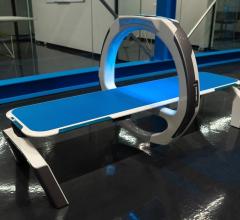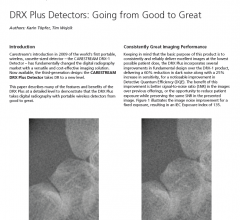Jan. 10, 2007 - The growth in U.S. healthcare spending has declined to its slowest rate since 1999, largely because of a dramatic dip in the growth of prescription drug spending, government economists reported Tuesday.
At the same time, however, households are seeing health-care costs consume more of their personal income, according to the government's annual report on healthcare spending.
"Health spending growth in 2005 was 6.9 percent, the third year in a row of slowing growth and the slowest since 1999," said Cathy Cowan, an economist with the Centers for Medicare and Medicaid Services (CMS) and co-author of the annual report on healthcare spending.
But it's unclear whether this is a long-term or short-term trend. "We're uncertain at this point whether this slowdown after the most recent recession is going to be temporary, as it was after previous recessions before 1990, or whether it will be longer term, such as we saw after the recession in the early '90s," said Aaron Catlin, also a CMS economist and the lead author of the study, which appears in the current issue of Health Affairs.
And despite the slowdown, the share of household personal income spent on health care rose from 5.4 percent in 2001 to 6 percent in 2005, the report found.
In fact, out-of-pocket spending for health care rose to $249.4 billion in 2005, compared with $235.8 billion in 2004 and $224.5 billion in 2003, according to the report. While the bulk of the increase came from expenditures for hospitals, physicians and clinical services, prescription drug payments were the largest component (20.4 percent).
"Health care is eating more and more of a family's budget, and that's not good news in spite of the fact that health expenditures may have slowed," said Mark Rukavina, executive director of The Access Project in Boston, a national resource center providing support to local groups seeking to improve access to health care.
"Employers are seeking cost savings, not increasing the share of premiums paid by employers but increasingly using co-insurance, deductibles and eliminating coverage for treatment or prescription drugs," he noted.
According to the government's report, health-care spending now accounts for about 16 percent of the U.S. gross domestic product, up from 15.9 percent in 2004. That translates to $6,697 per person. And total health-care spending is now estimated to reach $2.2 trillion in 2006.
The rate of health spending growth is down from 7.2 percent in 2004 and 8.1 percent in 2003. And that decline is driven primarily by prescription drug spending, which grew only 5.8 percent.
"Prescription drugs are growing slower than the rest of health care for the first time since the early 1990s," said Stephen Heffler, co-author of the study and director of CMS' National Health Statistics Group. "It peaked in 1999, just six years ago, at 18.2 percent."
The slowdown was caused by a deceleration in Medicaid drug spending, changes in therapy regimens, tiered copayment benefit plans, and increased use of generic drugs, the economists noted. The decrease in Medicaid drug spending growth, which slowed from 11.6 percent in 2004 to 2.8 percent in 2005, "was caused by cost-control initiatives in many states, as well as states increasing rebates with manufacturers," Catlin said.
Private-side drug spending, which represents almost three-quarters of the total, also slowed, from 7.2 percent in 2004 to 6 percent in 2005. In addition, the growth of healthcare premiums continued to decline for the third straight year in 2005, giving the slowest rate of growth since 1997.
Employers assumed 74.4 percent of the bill for private health insurance in 2005 and employees 25.6 percent. Employer share is slightly higher than it was in 2005, but well below the levels of 1999.
A second study in the journal found that the degree of concentration of health-care expenditures in the United States has declined after a long period of stability.
"Declining concentration coincides with a really rapid increase in prescription drug spending," said Samuel H. Zuvekas, lead author of that report and a senior economist with the Agency for Healthcare Research and Quality. "That's important because prescription drug spending is diffused over a larger proportion of the population compared with inpatient services."
But while this may seem like good news, any celebration is premature, according to Karen Davis, president of The Commonwealth Fund, a private, nonpartisan foundation that supports independent research on health and social issues.
The United States still spends more than twice per person per year than what other industrialized countries spend on health care, the group said in a statement released Tuesday. Even the slower spending growth continues to outpace inflation and growth in wages for the average U.S. worker.
Another report issued last week by The Kaiser Family Foundation, a nonprofit foundation focusing on the major healthcare issues facing the nation, found that the United States spent at least three percentage points higher of GDP on health care than any of 19 developed countries studied, all of which provide universal health coverage to their citizens.


 December 03, 2020
December 03, 2020 









